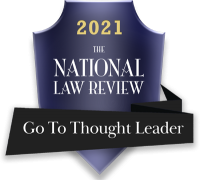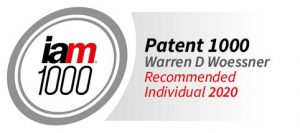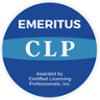A “catch 22” is defined as a “dilemma or difficult circumstance from which there is no escape because of mutually conflicting or dependent conditions.” (As in if a pilot claims he is too mentally ill to fly missions, he has demonstrated his own sanity in making the request. This is from the novel Catch 22 by Joseph Heller.)
In Nuvo Pharms. v. Dr. Reddy’s Labs.,923 F.3d 1388 (Fed. Cir., May 5, 2019), Nuvo found itself in a legal catch 22 while unsuccessfully defending its patents on a controlled release form of an NSAID in a Hatch-Waxman litigation brought by Dr. Reddy’s Labs. and other generic manufacturers. The claims of the patents are similar. Claim 1 of U.S. Pat. No. 8,557,285 reads as follows:
- A pharmaceutical composition in unit dosage form comprising therapeutically effective amounts of:
(a) esomeprazole [a “PPI”], wherein at least a portion of said esomeprazole is not surrounded by an enteric coating; and
(b) naproxen [an NSAID, which can have deleterious effects on the stomach] surrounded by a coating that inhibits its release from said unit dosage form unless said dosage form is in a medium with a pH of 3.5 or higher [wherein at least a portion of said esomeprazole is released regardless of the pH of the medium].
Although Ariad and many of the later written description requirement [WDR] decisions handed down since have involved complex biotechnological inventions, I could explain this invention to my college freshman grandson. Draw a circle within a circle. Label the inner circle NSAID and the space between the inner and the outer circle, NSAID. Then thicken the “shell” of the inner circle a bit and label it “enteric coating.” The idea is that the PPI will raise the pH of the stomach when the “pill” is taken so that the enterically coated NSAID can reach the small intestine and not be destroyed by the stomach acid.
The district court found the claims to be nonobvious, at least in part because the prior art would teach the POSA that the stomach acid would destroy the PPI, e.g., that it would not protect the NSAID. The court also found that the specification is adequate to teach the art how to make and use the invention.
The Generics argued that, if the claims are nonobvious, then fail the written description requirement (WDR) of s 112 because “ordinarily skilled artisans would not have expected it to work and the specification provides no experimental data or analytical reasoning showing the inventor possessed an effective uncoated PPI” as the outer layer. The Generics argued that in such a situation, “satisfaction of the [WDR] requires either supporting experimental data, or some reason theory or alternative explanation as to why the claimed invention is possessed by the inventor.” They reasoned that the PPI must be acting to raise the gastric pH to at least 3.5 “and written support must be provided for that [efficacy] limitation.”
The panel recognized that “our case law does not require experimental data demonstrating effectiveness…and also does not require theory or explanation of how or why a claimed composition will be effective…[and] the invention does not actually have to be reduced to practice.” So how could Nuvo lose? The panel went on to find that “[i]n light of the fact that the specification provides nothing more than the mere claim that uncoated PPI might work, even though [POSA] would not have thought it would work, the specification is fatally flawed.”
Nuvo also argued the POSA would recognize that the effect of the uncoated PPI would be inherent in view of the specification’s description of how to make and use, citing Allergan v. Sandoz, 796 F.3d 1293 (Fed. Cir. 2014). Although the facts, including evidence of teaching away, appear favorable to Nuvo, the panel distinguished Allergan, splitting some factual hairs in the process.
Ironically, it is clear in retrospect that the two layer pill eventually became an effective product, or why would the Generics attack its patent coverage? My mentor used to say that you can guess at the effect of various claim elements, but you better guess correctly, and Nuvo did just that. Nuvo has now petitioned for cert., posing the question as:
“Whether the Federal Circuit erred by holding that, whenever the prior art teaches away from a pharmaceutical composition, the [WDR] of a patent claiming that composition can satisfy [s. 112] only if it discloses either experimental data proving efficacy or a detailed theory of why the composition works sufficient to show that it would be effective.”
One problem with this question was the panel’s ability to distinguish Allergan, which also involved art teaching away. This case may just be too fact-driven to interest the Supremes, but it should be of interest to anyone drafting an application on early stage technology, even if the efficacy seems self-evident.






